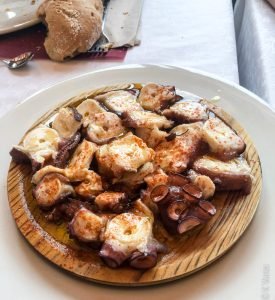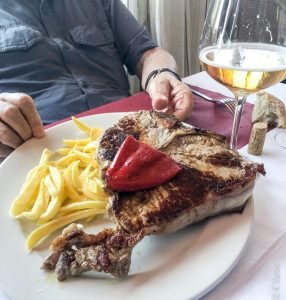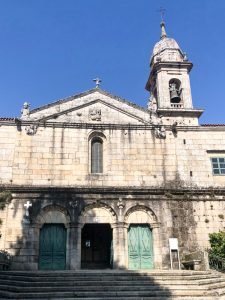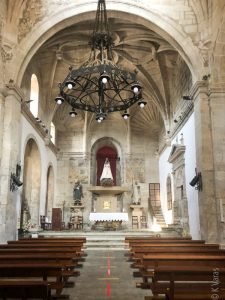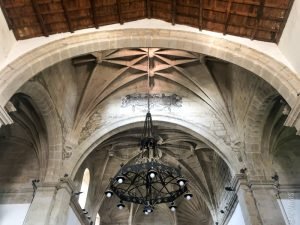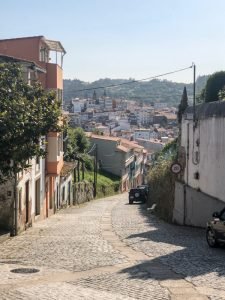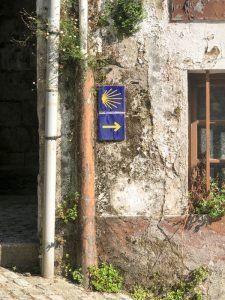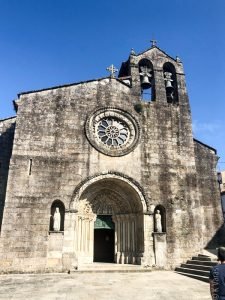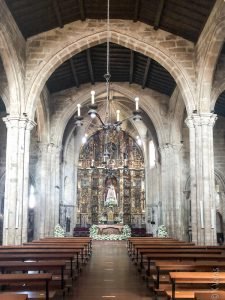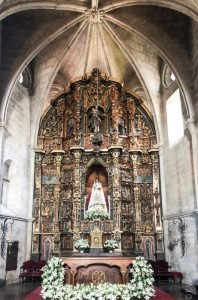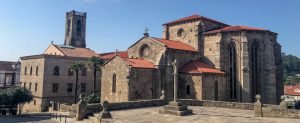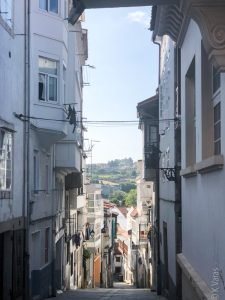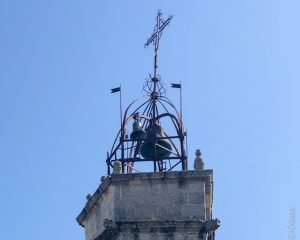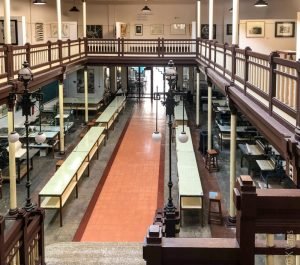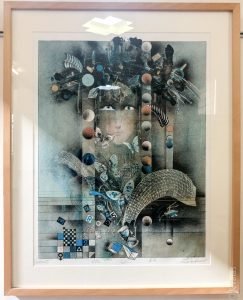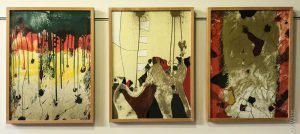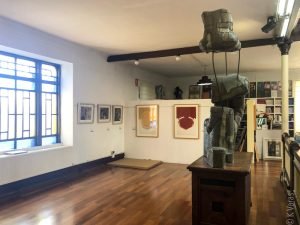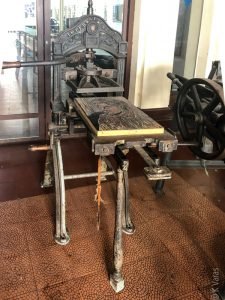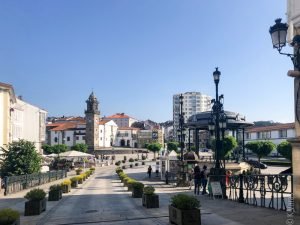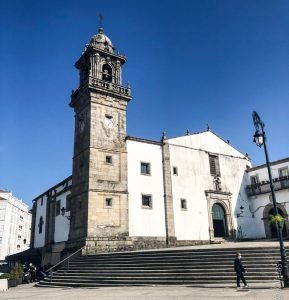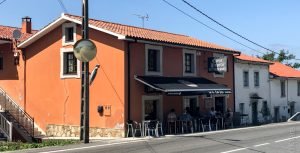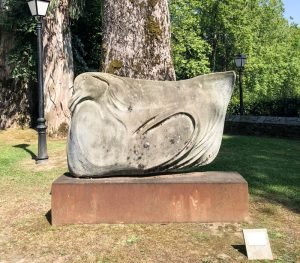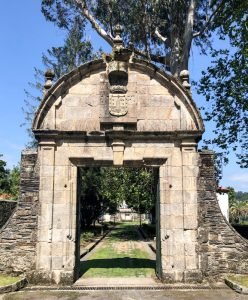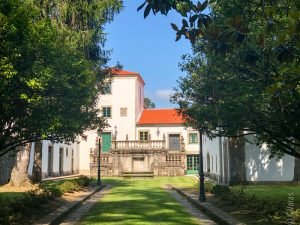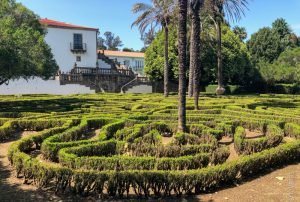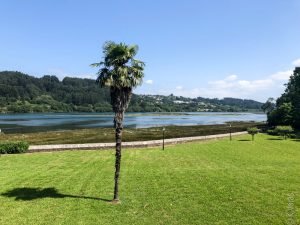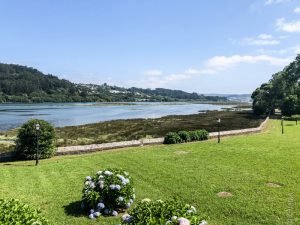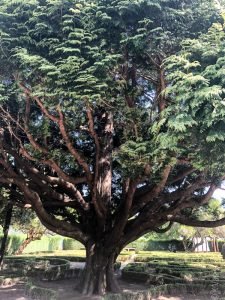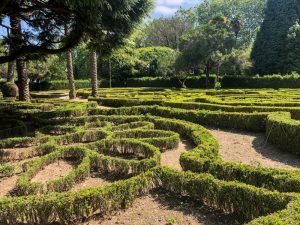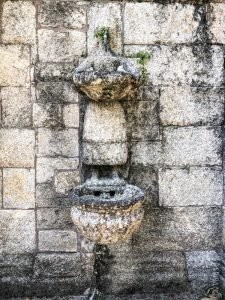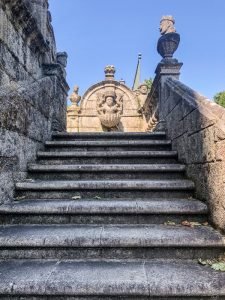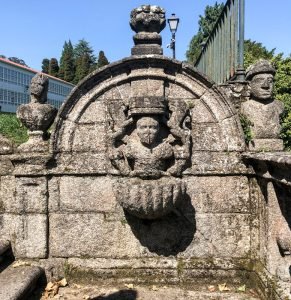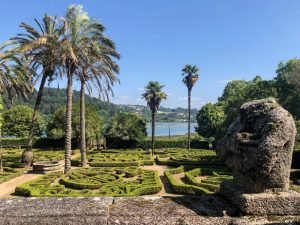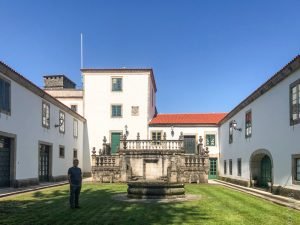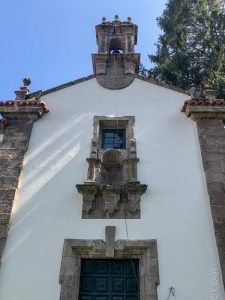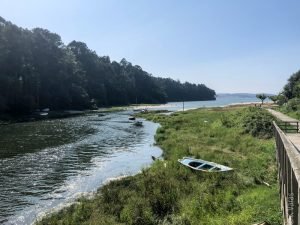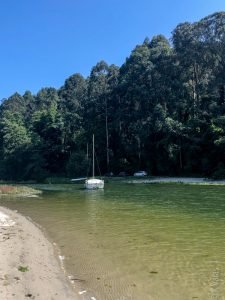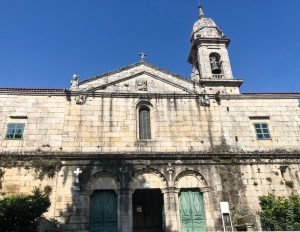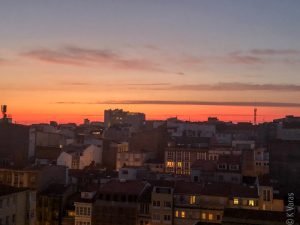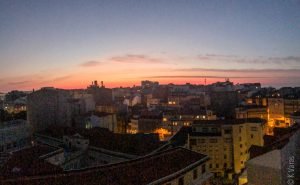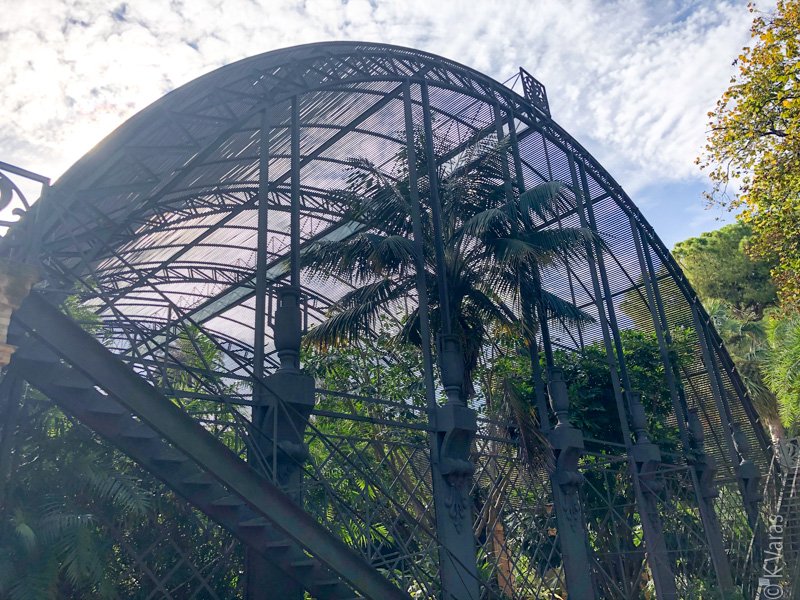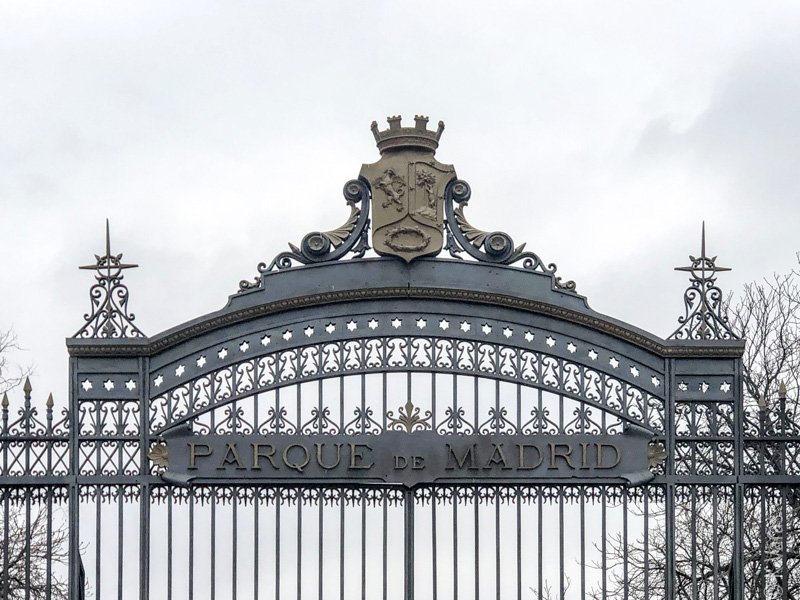
Betanzos
One of the nice things about staying with (new) friends is that there are more opportunities to go on excursions out of town to places that were not on my radar. This is how I got to know the town of Betanzos and its environs. It is a small town of 13,000 today, but it was once the capital of one of the seven provinces of the Kingdom of Galicia. Its origins go back to Roman times when it was a settlement called Brigantium. It is located north of A Coruña at the very end of the Betanzos ria, one of 12 rias that make up the Rías Altas gallegas or Galician High Rias (there are also Rías Medias and Rías Bajas, as the Galician coast is divided into three parts). A ria, if you don’t know, is a long, narrow inlet of a river that gradually decreases in depth as you move inland, similar to a fjord except fjords are products of glaciation and rias are drowned valleys. The whole western coast of the Iberian peninsula is full of them.
This being Friday, Fely and a few of her friends decided to go have lunch at some recently discovered restaurant close to the town of Betanzos and since one of these friends just so happens to work in Betanzos, it was decided that we should go and try it. By “we” I mean Fely, Paco and Roberto, another couple Alfonso and his wife (sorry, I’m bad with names), and Petunia. Roberto picked us up and then we met up with the others in Betanzos before making our way some 9km to the nearby Curriños where the very unassuming Casa Pepito stood on the side of the road. We weren’t quite sure what to expect (we were in the middle of nowhere, really) but clearly the place was very popular, judging by the number of cars in the parking lot. Once inside, we were led to a large table on the back verandah from where we could see the whole valley below. If the food was going to be half as good as the view, we were in for a treat.

In my short time in Galicia I have discovered three food-related things: 1: yes, the octopus here is better than anywhere else in the country, 2: the bread here is also by far the best in the country, and finally 3: the Spanish tortilla is the best in the country and just the way I like it. This restaurant let me have all three at once and much more. Some of us ordered individual dishes and some of us preferred to share but once the meals arrived it was impossible not to share everything, just based on the size of the portions. Casa Pepito is the place to go when you’re famished, that’s for sure! Alfonso ordered a steak, or, at least I thought it was a steak. What he got was a slab of meat so thick it looked like half a cow. The tortilla was so humongous it overflowed its plate. And the bread! Oh the bread! I really wish I had taken more pictures of all this yummy food but I was really too busy stuffing my face and I regret nothing.
After this amazing feast (and it was a feast), we ended up splitting the group: Fely and Petunia both had to go back to work, one in Betanzos and the other in A Coruña, so Alfonso delivered them to their destinations. Paco, Roberto, and I decided to spend the afternoon in the area while waiting for Petunia too finish work and then give her a ride back to A Coruña where she lives. She commutes the 25km or so daily by bus so a comfortable ride by car certainly appealed to her.
I was the winner in all this, however, as I got to spend a few hours with a couple of really nice guys who took me around the area and played tourist with me. The first place we went to was Pazo de Mariñán, a traditional Galician country manor house dating all the way back to XV century. There didn’t appear to be anyone controlling who could come and go so we just went in and roamed around the grounds, enjoying the French-style gardens, the spectacular views out to the river, and even up close on the terraces. We couldn’t quite figure out if it was possible to go inside since there was literally nobody there forcing us to only imagine what the baroque interior should look like. After belonging to a number of local lords, the pazo is now in the hands of the Galician state and used for cultural events, none of which were happening just then.
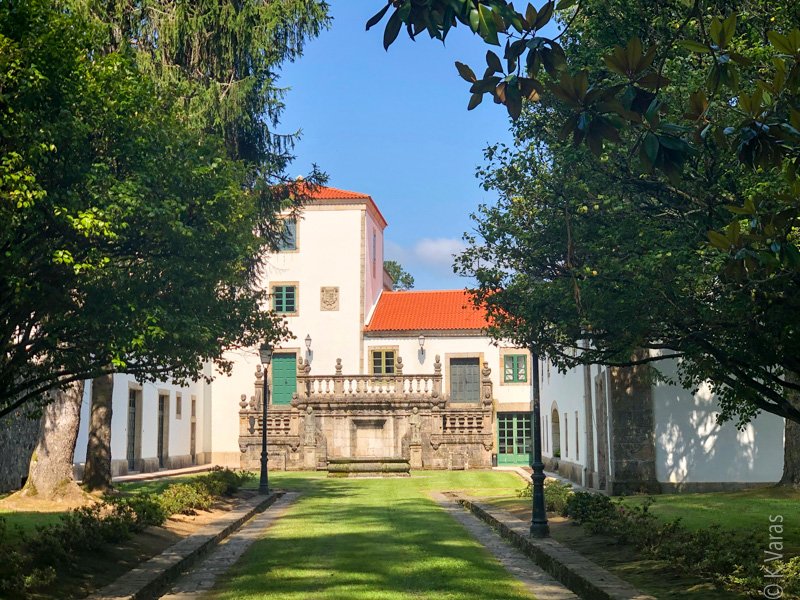
Inspired by the river views, Roberto drove us to the actual village of Bergondo next (we were in one part of it already) where we could walk down to the beach on the banks of the head of the Bergondo ria (that’s the narrow point inland to you non-geography folks). You could see how shallow this end in comparison to normal rivers, leaving a perfect spot for easy bathing. There were quite a few families enjoying this beautiful warm day, I’m sure all of them happy they were not suffering the heat dome currently over Valencia.
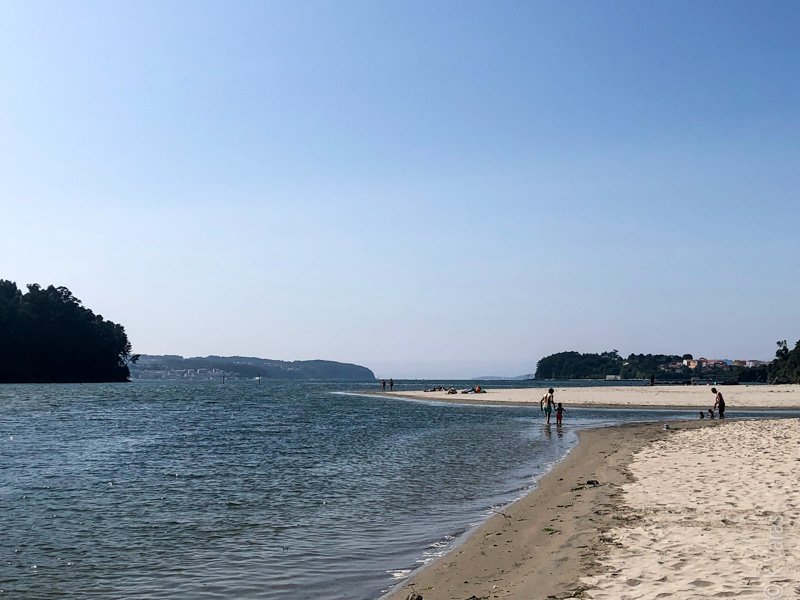
Still having some time to kill before picking up Petunia, Roberto decided to just drive through some back roads towards Betanzos itself, a route I wish I had been in a better position to photograph. Though, to be fair, all the pictures would be of very green forested hills, if you could even see them for the trees. Speaking of trees, there is a ridiculous number of eucalyptus trees in Galician forests, planted to replace the traditional (and native) pines. This is a huge shame as eucalyptus is an import, and not the good kind. But it is cheap and grows fast, and that makes someone money, I’m sure. After navigating through the backroads for a while we came out on the other side of Betanzos, way up in the hills, overlooking the whole city. The first place we came to was an old church that we decided to explore. I was very pleased to find that I was standing on the Camino de Santiago (the English Way, as this particular leg is called), and as if right on cue, some pelegrinos came down the hill towards the church. This was my first exposure to the pilgrims, a sight I was sure to see much more of soon.
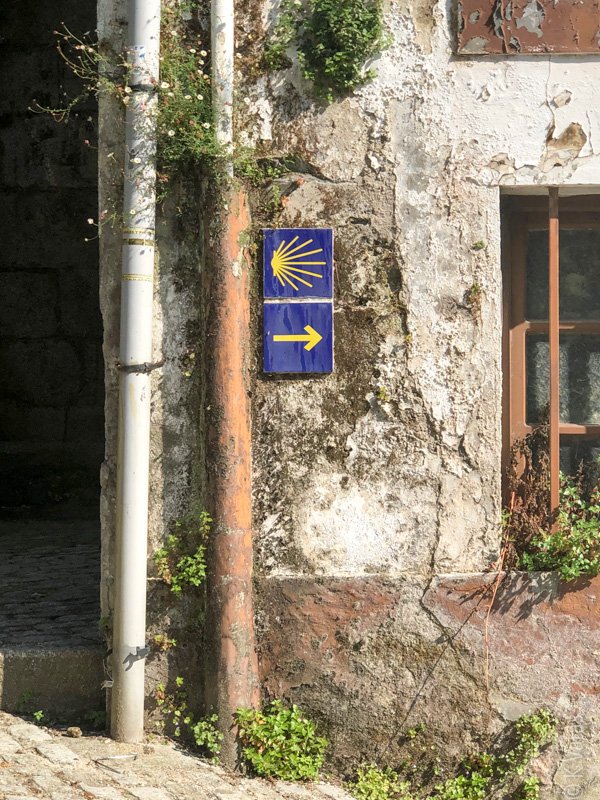
Our next stop was the old town of Betanzos, a potentially very picturesque part of town, if it were not for the shabby state it was in. Apparently the centre of town has been left to deteriorate over the last few years, and it was showing. This is a great shame as I could see the old town had good historic bones, but it was lacking the TLC evident in pretty much all the places I have visited so far. We did walk by the two major churches which didn’t look all that bad but then stone tends to look good even when not attended to for a while.
The coolest part of this visit to Betanzos was the art centre we wandered into. Fundación CIEC (El Centro Internacional de la Estampa Contemporánea or the International Centre for Contemporary Engraving) is a place dedicated to the creation, exhibition, research, and training for established artists, young creators, and the public. They offer courses in woodcutting, serigraphy (silkscreening), lithography, and chalcography (copperplate engraving), in a place that must have been a printshop of some sort in the past. On this day, there was an exhibit of what looked like local artists’ and/or students’ works. All the artwork was very good and we took our time checking it out. But what was very strange was the fact that there was absolutely nobody in the building with us, as in nobody working there, nobody creating art, nobody caring that we just waltzed in and started looking around. You have to admit that it was a bit odd to have gone to two totally random places and both were not only deserted but also very welcoming.

We finally met up with Petunia and retreated to one of the bars lining the edges of the main old city plaza (Plaza De García Hermanos) to celebrate a very well spent day in good company. The drive back to A Coruña only took about half an hour. I always enjoy spending such extended periods of time with my new Spanish friends as this is one of the few opportunities I have to practice my language skills. Speaking of languages, I’m sure you’ve noticed I have been using names for things that don’t look very Spanish. Most of the place names in Galicia are, in fact, in Galician, starting with the name of the city itself: A Coruña. I always wondered what that “A” meant; in my mind I tend to translate it as “to” since the preposition “to” in Spanish is “a”. That is, of course, totally wrong, mainly since in Spanish the name is actually La Coruña. There are also many places with “O” in front which means “el” in Spanish (the male article the). What I’ve forgotten to mention is that the second official language here is Galician (gallego) and it is very similar to Portuguese. This is not surprising since Portugal is not far away and language, as we all know, does not respect boundaries. Just as Catalan (and by extension Valenciá) is a mix of Spanish and French, Galician is a mix of Spanish and Portuguese. What is interesting is that to me Catalan sounds Portuguese to me too, but I think that’s because it is so much more nasal than Spanish. When I hear Galicians speaking Spanish, however, I think they’re Italians speaking Spanish, i.e. with an Italian accent. You’d be amazed how many time I heard some local speak Spanish but since I thought they were Italian I had an urge to say grazie and prego, just to be friendly, you know? One day I will keep all straight in my head … maybe.



